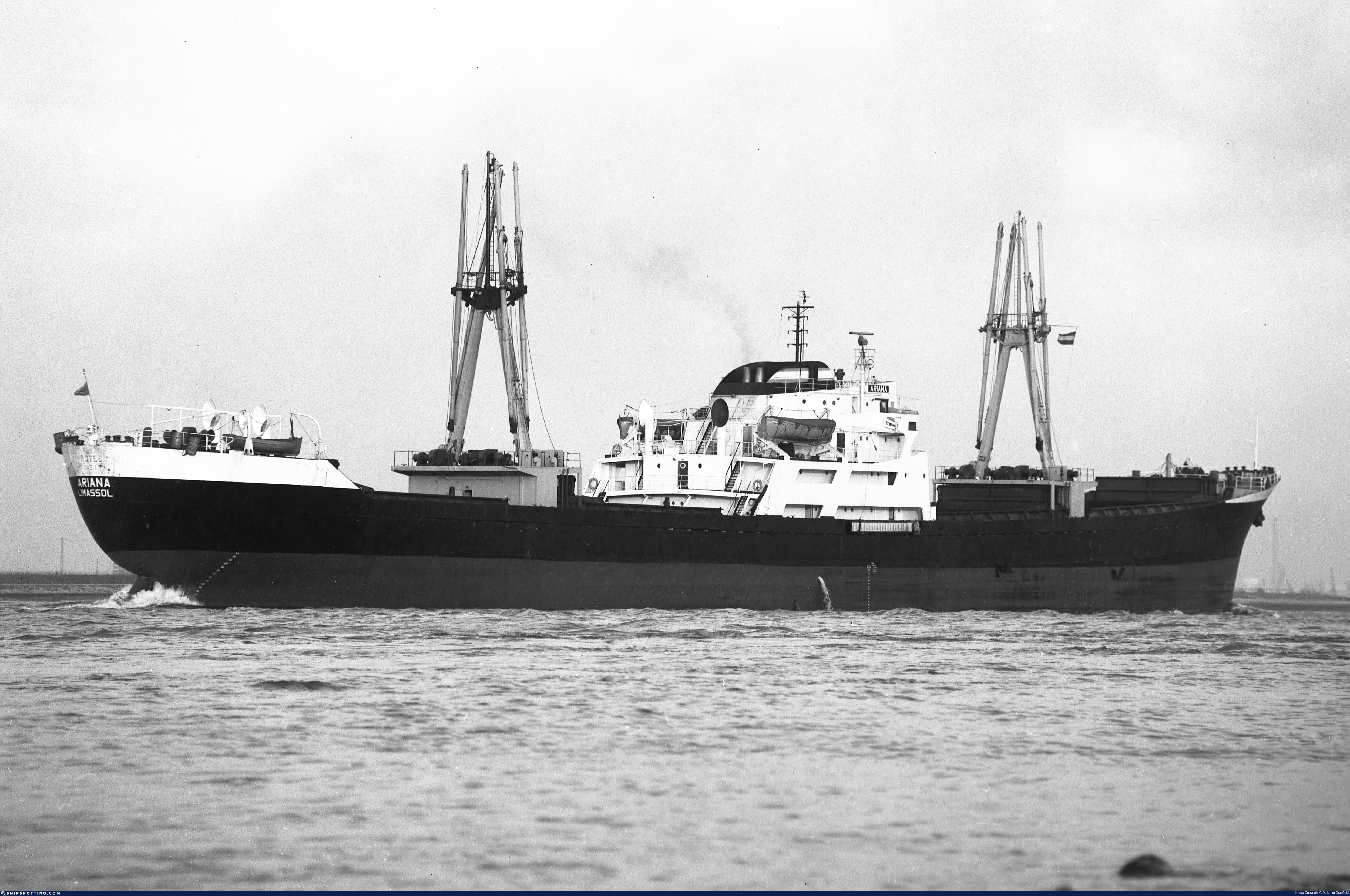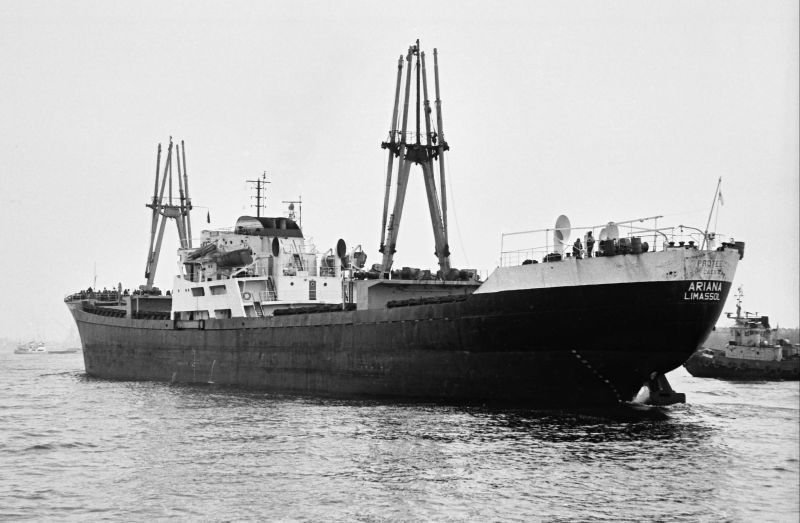
®
SHIPSPOTTING.COM
WELCOME TO SHIPSPOTTING.COM
ARIANA - IMO 5286013
Photo
details
Photographer:Malcolm Cranfield [ View profile ]
Captured:Mar 25, 1975
Title:Ariana
Location:Rozenburg, Rotterdam, Netherlands
Photo Category:Ore Carriers
Added:Apr 3, 2023
Views:301
Image Resolution:4,998 x 3,298
Description:
The Greek owned (B.& S.Kalamotusis), 1957 Nantes built ore carrier ARIANA, represented in London by Seven Seas Maritime Ltd, passing Rozenburg inbound for Rotterdam from Caen on 25th March 1975, during a long period when she was solely employed transporting coal to Caen.
EX-PROTEE-73 (Soc. Navale Caennaise)
Later: 1981: ANASTASIA 1983: ASIA
She was scrapped at Laurium in Greece, arriving there between 15/2/83 and the end of 1985; work was completed by April 1986
Vessel
particulars
Current name:ASIA
Vessel Type:Ore Carrier
Gross tonnage:4,233 tons
Summer DWT:7,345 tons
Photos:2 photos by 2 photographers
AIS Position
of this ship
There is no AIS Position Data available for this ship!
Would you like to add AIS Coverage?

Photo
Categories
This ship exists in the following categories:
Ore Carriers - 2 photos
Photographers
of this ship
(2)
1 photos
1 photos





COMMENT THIS PHOTO(7)
Edit
comment
She had carried cargoes of phosphates, coal and ore with some voyages made from Seven Islands in Canada to Port Talbot with cargoes of iron ore.
Edit
comment
Edit
comment
Edit
comment
Compare this ship to the six Halcyon Line ships, (Stad Vlaardingen, Stad Zwolle, etc )built in Germany in the early sixties, which also have an all-midship arrangement with holds before and after this structure, and are/were classified as bulk carriers)
Edit
comment
Edit
comment
Shipowners very often used typical general cargo vessels to carry bulk cargo, bulk carriers to carry general cargo.
My father was a member of the crew of the largest tanker at that time (1974) under the Polish flag (m/t KASPROWY WIERCH), when the crude oil tanker , during her maiden voyage , brought tens of thousands of tons of grain to the port of Gdynia w from New Orleans . Such cases have happened, are happening and will probably happen again in the future. In the past, many universal ships were built to carry various cargoes (ore-coal carriers, oil-ore-bulk carriers and others). Today, specialist vessels dominate.
Regards.
Edit
comment